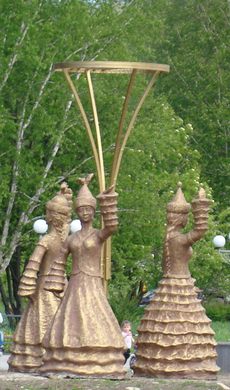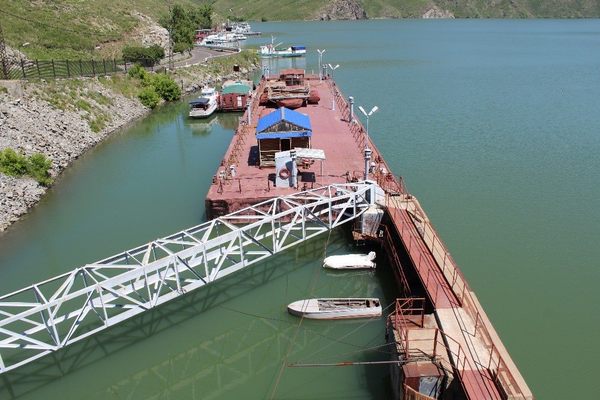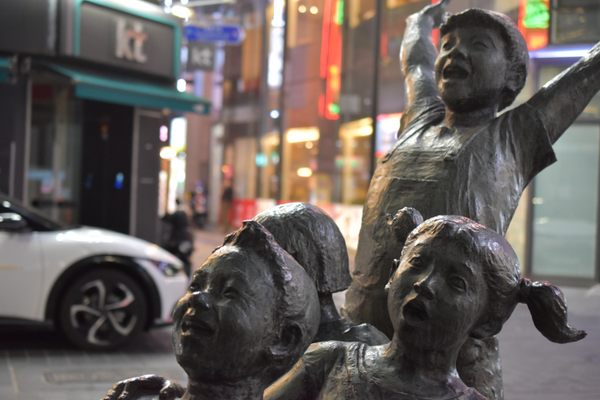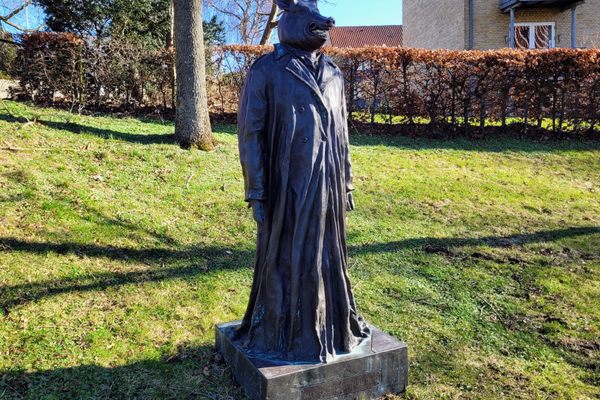Filles Dansantes
A statue of traditional Kazakh dancers adds some beauty to this Soviet-era mining city.
Driving into the remote city of Ridder, it is easy to be distracted from the beautiful surrounding scenery of the Altai Mountains by the prolific decaying detritus from the city’s industrial history. But as the Soviet-era mining influences fade, public works of art, like the Filles Dansantes (Dancing Girls), mark a gradual rebirth.
This statue depicting three traditional dancers represents the essentials of Kazakh culture. They wear traditional dress including the distinctive saukele, tall hats with a name that translates to “sunny head.” They caper beneath a shanyrak, an iconic national Kazakh symbol. The shanyrak is the cross-section found at the top of yurts (the traditional Kazakh dwelling) and represents family, home, strength, and well being. The three dancers pay homage to Kazakh numerology, in which three indicates completeness and engenders a host of respected trinities including the Three Virtues, Three Kinds of Happiness, and Three Inescapable Truths.
The sculpture is also a reminder that traditional Kazakh dance has experienced a resurgence since independence in 1991. The Kara Zhorga (“black horse”) dance in particular has become popular. Although originally a dance for men that derived many movements from the art of riding horses, and deliberately employed farcical gyrations, women often perform this dance, but with distinctly more elegant choreography.
The statue’s grace belies Ridder’s rougher founding by a Russian-German military officer in 1786. When Philip Ridder stumbled upon rich mineral deposits, the new settlement was named “Riddersky Pit.” World famous for its metallurgy in the 19th century, the city was rebranded by the Soviets as Leninogorsk in 1941. Mining interests plumbed the nearby depths for lead, which was found in such abundance that more than 50 percent of the USSR’s supply came from Leninogorsk. Today, zinc rather than lead galvanizes the city’s economy.
The city was renamed Ridder in 2002, and a short distance from Filles Dansantes is another monument with a lump of ore sitting atop a plinth bearing Philip Ridder’s likeness in honor of this event.
Know Before You Go
Driving into Ridder is perhaps the best way to reach this city, located approximately 70 kilometers from the Russian frontier. Isolated as it may seem, it is the terminus of the E40, Europe’s longest motorway route.


















Follow us on Twitter to get the latest on the world's hidden wonders.
Like us on Facebook to get the latest on the world's hidden wonders.
Follow us on Twitter Like us on Facebook